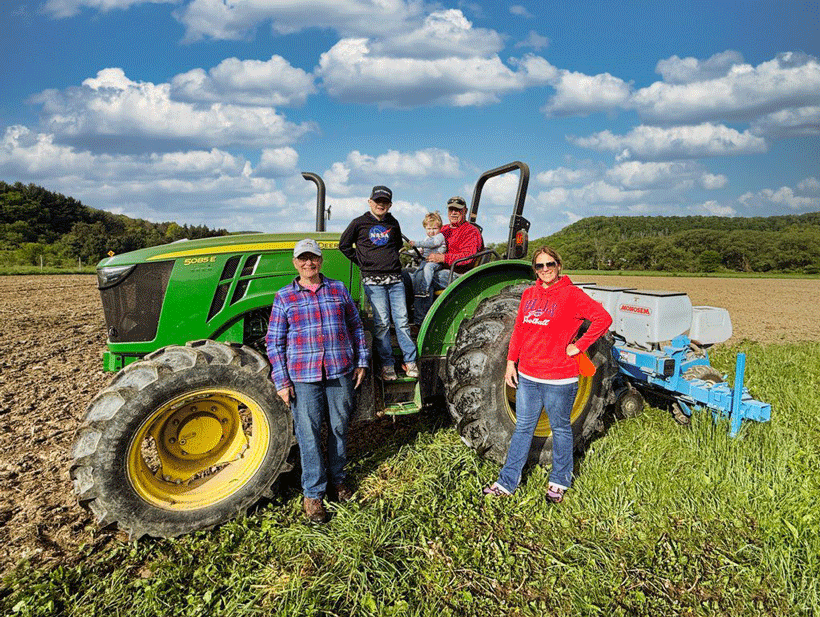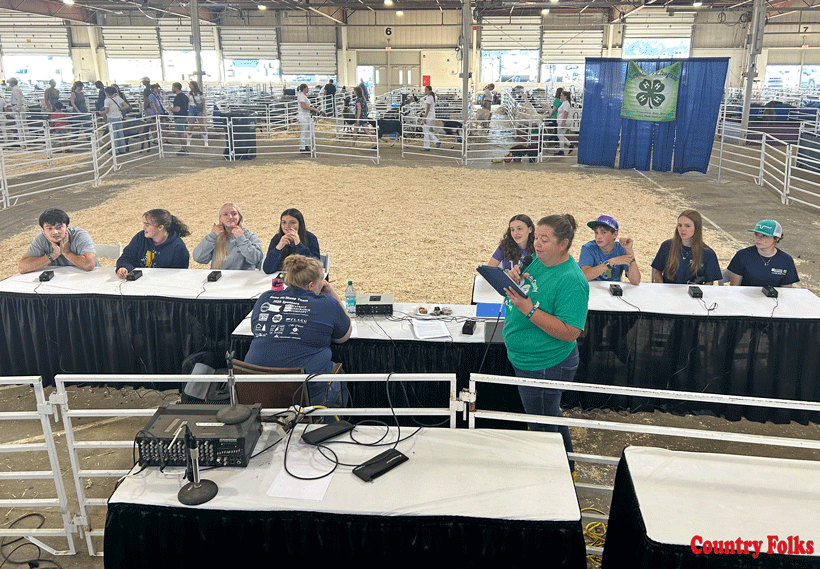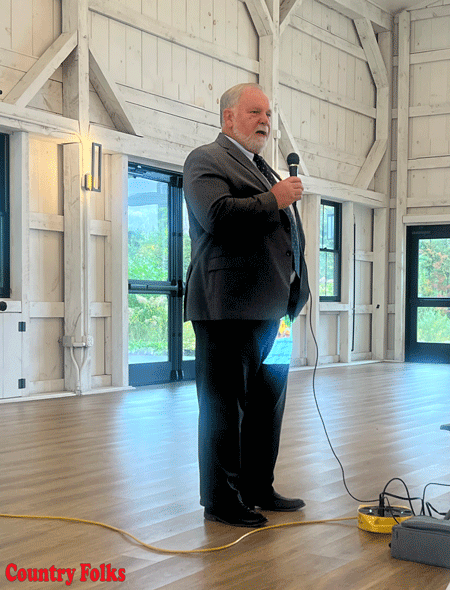If you own land, you could receive a tax deduction of $1,700/acre for soil nutrient reduction. Tyler Bruch, founder of Boa Safra Ag, presented on the topic at the recent 2025 New York Corn & Soybean Summer Crop Tour hosted by Rodman Lott & Son Farms.
“Boa Safra” means “good harvest” in Portuguese, a language in which Bruch is fluent. Founded six years ago, Boa Safra helps landowners recoup the depreciation value of lost nutrients in their land as a tax deduction according to IRS Section 180.
“Every dollar you can save, you should save,” Bruch said. “Taxes are the number one line item expense on any farm. Tax code is the rule book and can be utilized.”
When he learned that loss of soil fertility could net him a tax deduction of $1,500/acre in his case, he wanted to share this information with others. That urge prompted him to found Boa Safra.
The nationwide average a landowner receives per acre is $1,700, whether the land is farmed by the owner, farmed by a renter or comprised of forest. Bruch said that his company leverages a little-known tax code that even few tax preparers suggest to their clients. Boa Safra facilitates a third-party soil evaluation required by the IRS to qualify farmers for the deduction. It costs $40/acre to perform the assessment and complete the paperwork. Landowners may take the deduction once during the course of their ownership; however, any subsequent landowner – even family members – may do the same.
Those who rent the land that they use for farming may not take the deduction. It applies only to owners; however, owners who rent their land to others may take the deduction.

Photo by Deborah J. Sergeant
“Landowners who rent out their land can amortize it,” Bruch said. “The period for amortizing is three to seven years.” That can help farmers who want to offset taxable income.
Bruch said Boa Safra vets clients to ensure they would qualify for the deduction. The lowest deduction a client received was $700/acre – still a great return for the $40 fee paid. The smallest number of acres his company has assessed was three, though typically they’re larger.
Of Bruch’s 7,000 clients, only about seven have experienced audits “but they had no adjustments made” because of their nutrient deduction, Bruch said.
He made it clear that the tax benefit is a deduction, not a tax credit.
“This came out 65 years ago,” Bruch said. “For a long time, there wasn’t a lot of motivation to do it.”
The uptick in the price of farmland along with the rising cost fertilizer and other inputs has spurred more producers to seek tax deductions such as this.
Since the IRS requires a third-party test, a farmer may not use their own soil test. Boa Safra does not make soil health amendment recommendations but does share the results of their soil test with the landowner. Boa Safra compares the soil’s current nutrient level with what is considered average for the area while considering the land use, such as prior records of application, crop production or grazing.
The person seeking the deduction must own the land and use it for farming or timber. The land use must use soil nutrients. Only land purchased within the past three years may make an amended filing to take advantage of the deduction. To do so, the landowner must file Form 3115 to amend an incorrect filing.
As with any tax matter, farmers should consult with their professional tax preparer before making any changes in how they file.










Leave A Comment